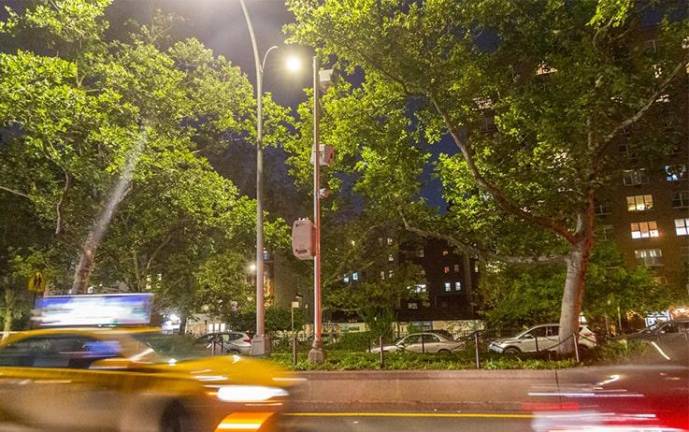Speeding Incidents Down 30 Percent in Year Since 24/7 Cameras Installed, Says DOT
The most noteworthy dip was on Houston Street in the East Village, which reportedly experienced a nearly 100 percent dip in incidents. Injuries from accidents have also decreased.

Speeding and injuries in traffic corridors have considerably decreased in the year since the Department of Transportation (DOT) installed 24/7 monitoring cameras, the agency claims. Before Mayor Eric Adams “flipped the switch” on expanded surveillance last August, speed cameras only operated between 6 a.m. and 10 p.m.
“One year ago we launched 24/7 speed camera enforcement, and the results are in: the program has reduced speeding, decreased the number of injuries, and made our streets safer,” DOT Commissioner Ydanis Rodriguez said.
Average speeding incidents have dipped a remarkable 30 percent, with Houston St. in the East Village seeing the sharpest reduction at 96 percent.
Pedestrian injuries have decreased in tandem with the expanded speed camera surveillance. In one instance, DOT reported a nearly 20 percent dip on the UWS’s Amsterdam Avenue.
Kathy Hochul reportedly shepherded the tweaks to state law that allowed for round-the-clock enforcement. New York State Assembly member Deborah J. Glick, who represents southwestern Manhattan, was instrumental in shaping the legislative changes.
Glick exulted in the DOT’s first-year report on the 24/7 cameras, proclaiming that “motorists are getting the message that speed kills and that reckless driving will not be tolerated in New York City.” She continued: “With nearly a decade of data supporting the effectiveness of these cameras in reducing crashes, along the Department of Transportation’s new findings, we see that the reduction in violations demonstrates that this program is modifying driving behavior to save lives, and is not simply a way to collect fines.”
Despite increased safety, some motorists object to the speed cameras. Tim McCann, an East Side resident, said he believed it was “overreach” and simply a revenue raising technique for the city. Public outcry against speed cameras caused some delays in implementing them on Long Island and legislation to allow speed limits to be lowered even further to 20 MPH stalled in Albany this past year.
One city worker pointed out that lowering the speed limit to 20 MPH was a “horrible idea. The slower we go, the more likely people are to use their phones because they are already moving so slow. People rarely text and drive on the highway. On local streets constantly.”
Motorists can get hit with fines ranging from $50 to $600 for caught-on-camera speeding, depending on the degree of the violation. Since the cameras do not identify the driver of a car, the summons is mailed to the registered owner of a vehicle.
One poll conducted by Emerson College and promoted by the advocacy group Transportation Alternatives said there is support from New Yorkers for enacting local control to lower the speed limit further to 20 m.p.h. or less. But a bill known as Sammy’s Law, named after a 12 year old who was killed by a driver ten years ago in Brooklyn–to allow speed limits to cut to to 20 MPH stalled in Albany this year. Some politicians, particularly in the outer boroughs, reportedly feared a local backlash against such a low MPH limit
Keith J. Kelly contributed to this story